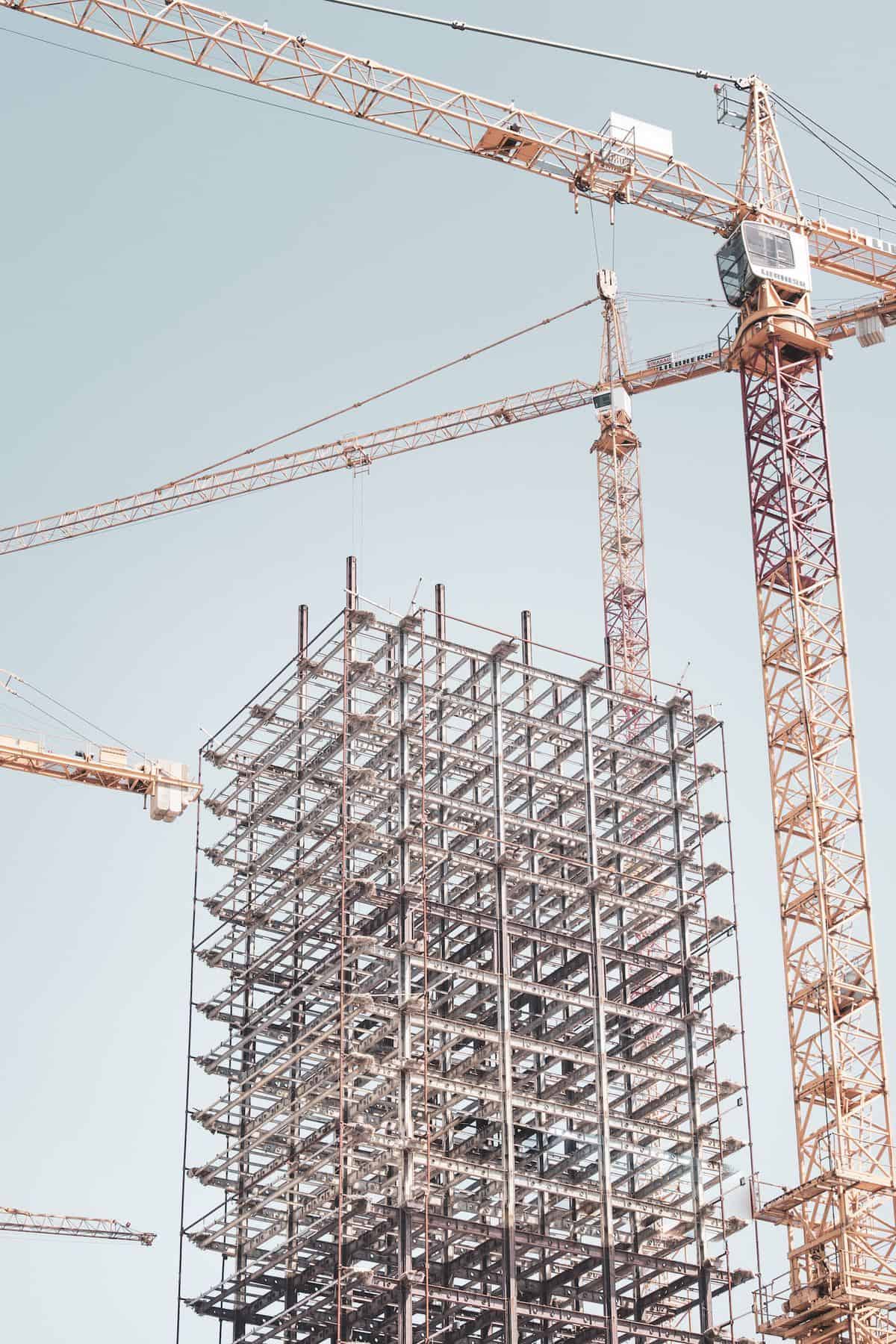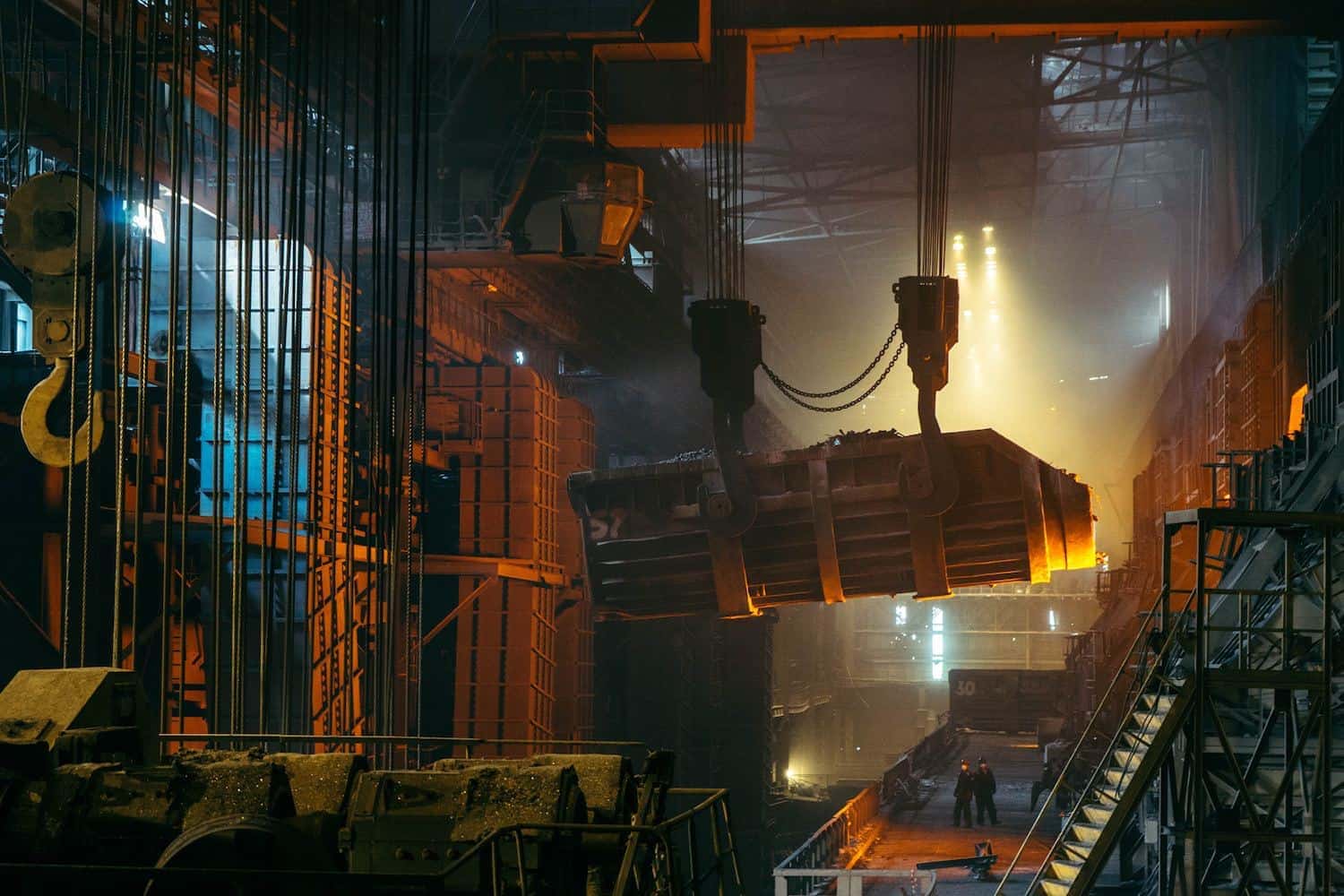When people think of structural steel framing, they often think about garages, skyscrapers or large agricultural buildings. But steel frame construction is much more versatile than that. There are many reasons why people might opt for steel construction and it has many advantages over other materials that make it a top choice. And steel as a building material can be used in almost every part of the building process, whether it’s in roofing, installing floor joists or framing.
Here are some of the main benefits of using structural steel in construction.
Steel is Lightweight
While it may seem counterintuitive at first, steel will usually be a much lighter building material than wood, for instance. People might assume at first glance that steel is heavier than wood since a steel 2X4 may be heavier than a wood 2X4, but that’s only because of its density. If we’re talking about framing, an I-beam made of steel will always be lighter than even the lightest wood I-beam you can find. And when comparing steel I-beams with Parallam, glulam and LVL beams, steel will usually come out on top.
The fact that steel is a lighter material compared to other options also reduces labor costs and makes shipping a lot easier and less costly. Steel construction also allows you to simplify design elements as well, notably when it comes to the building’s foundation or when working on various structural support systems.
Shorter Building Times
Time is money, and there aren’t that many industries where this is truer than in the construction business. In our current high-tech era, customers demand faster and faster results and aren’t satisfied with regular timelines. Architects and builders hate having to work on fast-tracked projects for many reasons. First of all, quality is often compromised as a result and having to work on an accelerated schedule often means that the risk of accidents is also higher.
But steel offers a great solution for builders looking to reduce building times without compromising the quality of their work or the safety of their workers. Steel parts can be engineered in a factory setting following a set design and be shipped out to be erected on site. This step can significantly reduce construction time and allow large-scale projects to be completed in a matter of weeks.
Companies that specialise in temporary buildings, can have a whole project completed within 1-3 months from order to completion (depending on the complexity of the design).
Since the whole fabrication process is quality controlled, this allows project managers to focus on other things. In addition, the already assembled and pre-cut parts allow you to save time on cutting and measuring components on site. You also don’t have to worry about human error as well. This will allow you to save costs that arise from having to take elements apart because of bad measurements.
Compare that with concrete, for instance, where you have to do much of the work on site and have to wait weeks for the concrete to actually cure before you can even continue a project.

Steel Allows you to Save Money
Not only is steel lighter, more portable and allows you to cut down on construction time, it also offers a lot of other ways that you can reduce your costs.
First of all, steel is one of the most recycled and recyclable materials there is. So, instead of adding to the total amount of material being discarded every year, you’ll actually be able to cut costs on materials and promote sound recycling habits. And since there is an increase in awareness surrounding recycling, waste removal companies will usually be able to pick up excess waste free of charge thanks to a variety of subsidized programs.
Steel is also extremely durable, which also drives costs down long-term. First of all, maintenance on still buildings costs a lot less. Replacements and repairs are much less frequent as well, which makes them an even better option budget-wise. Over the course of 50 years, you can easily save tens of thousands on extra costs by going for steel.
Steel production has also evolved over the course of the last few years and continues to do so, which further pulls the price of steel down. There was a time when ten work hours were needed to produce one ton of the material. These days, a ton of steel can be produced in less than an hour. These cost savings end up eventually benefiting the customer.
And not only that, but steel buildings will also cost you less to insure as well. Because of steel’s ability to withstand extreme temperatures, natural disasters, snow, seismic activities and fire, insurance companies will usually charge much lower premiums on steel constructions. They are also more resistant to infestations and decay, which is another factor that weighs in the balance.
Steel is Versatile
There aren’t that many building materials that are as versatile as steel. From shingle-like roofing patterns all the way up to wood-like sidings, there are many things you can do with steel.
This is why steel is often the material of choice for designers and architects alike. It allows them to get creative with the design while still having the ability to create buildings that are both resilient and safe. It’s steel’s durability that allows it to be used in the construction of all types of buildings from warehouses, airplane hangars, indoor arenas, and agricultural buildings.
And steel is not limited to the commercial sector anymore. Steel is being used more and more in residential construction as well. Imagine a scenario where a family tears down a wall for remodeling only to find out there is a huge load-bearing wooden beam smack-dab in the middle of it. With steel, they have the option of running beams across the ceiling, removing the need for having a load-bearing beam in the first place.

Wood and Steel Hybridization
There are those times when hybridization is just inevitable. Certain homeowners, for instance, might be sold on steel’s durability, but might not want to veer away from wood completely. Construction companies have been able to cater to this demand by creating buildings that combine the strength and durability of steel with the insulator benefits wood has to offer.
It’s Great for the Environment
We already talked about how easy it is to recycle steel and how steel is one of the better recyclable materials you can use in construction, but this is not where it’s environmental benefits stop.
First of all, the steel industry has been able to significantly reduce the amount of energy it uses and the amount of CO2 that is released during the production and shipping of steel.
And when coupled with other design improvements, steel buildings are some of the most energy-efficient types of constructions you can find. The way prefabricated parts are engineered allows them to retain energy better, especially when used with proper insulation. Roof panels are perfect if you want to install a solar array and cool metal roofs allow you to reduce solar heat gain, which further allows you to cut down on energy costs.
Steel Constructions are Safer
Another area where steel has many construction materials beat is safety. While steel is already non-combustible due to international building codes, it also has to be fireproof as well. This is because the integrity of steel structures can be compromised under high heat. This double layer of protection makes it one of the safest options for a building that would be at a high risk for fires, like hangars or work areas, for instance. Industries that deal with welding also prefer to go with steel as a material because of its fire-resistant properties.
In addition to fire resistance, a water-resistant coating is also often added to steel structures to make them less prone to corrosion. A water-resistant coating will also double up as fire resistant coating in many cases.
Another great aspect of steel as a material is that it doesn’t have the porosity required for mildew and mold to start growing, which makes it even safer. They also make steel a perfect material for residential construction.
You also have to factor in the safety benefits off-site manufacturing offers. There are much fewer chances for errors and prefabricated components are much safer to handle on the work site.
Conclusion
Steel frame structures have tons of things going for them which makes them one of the best building materials you can use. If you were thinking of having an auxiliary primary building built in no time and for a fraction of the cost, steel is your best option. However, choosing the right builder is also essential as well as choosing the best materials possible if you want to reap any of steel’s benefits, so make sure that you do your due diligence before working with any contractor or manufacturer.
